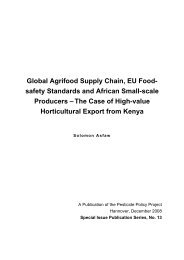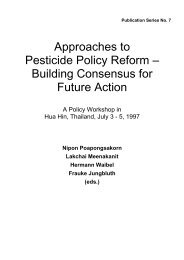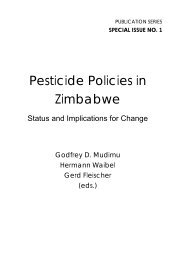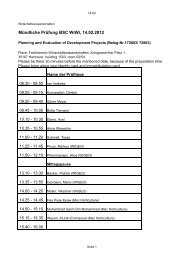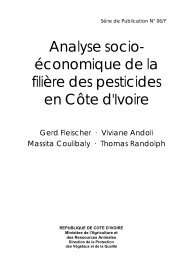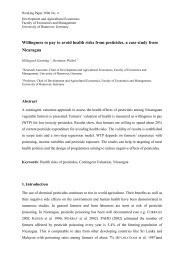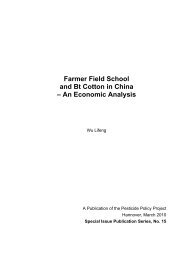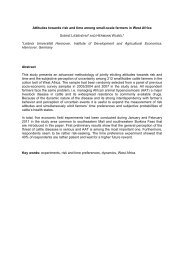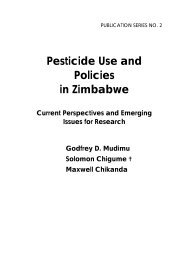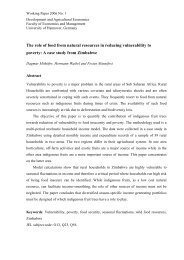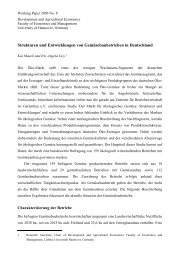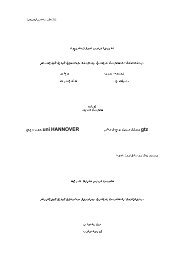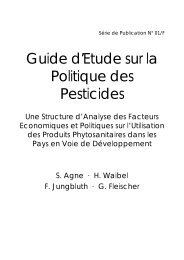PPP Special 08 - Institut für Entwicklungs- und Agrarökonomik
PPP Special 08 - Institut für Entwicklungs- und Agrarökonomik
PPP Special 08 - Institut für Entwicklungs- und Agrarökonomik
You also want an ePaper? Increase the reach of your titles
YUMPU automatically turns print PDFs into web optimized ePapers that Google loves.
27<br />
secondary consequence of drought because nutrients cannot be<br />
sufficiently transported in the soil and inside the plant.<br />
Since water is a major factor that determines productivity, the sample<br />
analysis was differentiated by irrigation.<br />
Figure 4.6 shows yields for irrigated and non-irrigated cotton in across<br />
and in on-farm comparison.<br />
Figure 4.6:<br />
Cotton yield for different conditions, across-farm<br />
and on-farm comparison, 2002<br />
Yield [kg/ha]<br />
2000<br />
1500<br />
1000<br />
500<br />
Irrigated<br />
Non-Irrigated<br />
0<br />
B t-C otton O nly-B t-C otton N o n-B t-C otton<br />
Cross-Farm Com parison<br />
Yield [kg/ha]<br />
2000<br />
1500<br />
1000<br />
500<br />
Irrig ated<br />
Non-Irrigated<br />
0<br />
B t-C o tto n<br />
On-Farm Comparison<br />
N o n -B t-C o tto n<br />
Source: Own Calculations, 2002<br />
Under rain-fed conditions, there are no significant differences between<br />
Bt and non-Bt cotton yields for across-farm comparison (see Annex A-4<br />
and A-5). The on-farm comparison shows a small yield increase for Bt<br />
cotton <strong>und</strong>er rain-fed conditions. There are differences for cotton <strong>und</strong>er<br />
irrigated conditions. The Bt cotton groups show significant higher yields<br />
as compared to non-Bt cotton.



